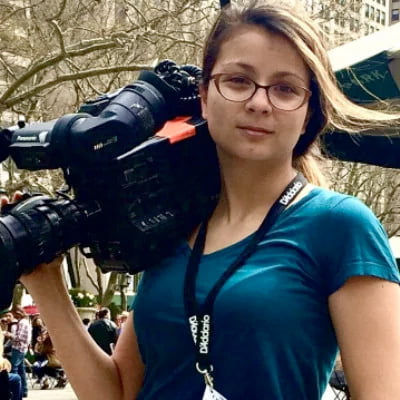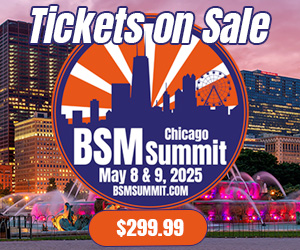While the media missed out on a historic opportunity last Thursday, 11 million people tuned into X — the social media platform owned by Elon Musk — to watch Robert F. Kennedy Jr. debate… himself.
Streamed from Los Angeles in front of a live studio audience, Kennedy & Company watched the debate live occasionally pausing the actual debate to give the Independent candidate a chance to speak.
While the innovative X debate allowed Kennedy to explain why Americans shouldn’t vote for Trump or Biden, he failed to bring up how his policies are better. What he did do at the very beginning of the debate was allege CNN colluded with the Republican and Democratic parties, which is why he was not on stage.
Thursday’s debate between President Biden and former President Donald Trump was the first not put together by an independent non-profit. Meaning CNN owned the debate. They commercialized the debate.
Perhaps this is why CNN threatened X owner Elon Musk with a lawsuit if the Kennedy “debate” took place. As of this writing, it’s yet to happen. However, there are several ethical concerns if the 24-hour news network should be allowed to. Though televised debates have been around since the 1960s the opportunity to transition these debates to a streaming or digital service could provide better options for the viewers’ freedoms.
Modern Presidential debates haven’t been around for very long but they have proven important for candidates to grasp hold of undecided voters. The first radio debate was aired in 1948 when Republicans Thomas E. Dewey and Harold Stassen went head-to-head in the presidential primary.
Eight years later, Democrats one-upped the GOP by televising their 1956 presidential primary debate. However, it wasn’t until the famous Kennedy-Nixon debate in 1960 when we saw two confirmed presidential nominees hit the airwaves, with 66 million viewers. Compare it to CNN’s 48 Million [rounding up] plus an additional 11 million from Kennedy’s debate, that’s only 59 million viewers. Our population has grown, yet fewer Americans are watching our potential Presidents debate.
After 1960, Americans waited 16 years (four election cycles) before we saw another televised presidential debate for the general election. It was 1976 Ford vs Carter. While the 1960 debate was sponsored by the news outlets, from 1976 through 1984 debates were sponsored by the League of Women Voters.
In 1987, the group dropped out of sponsoring presidential debates, releasing a statement that said in part, “because the demands of the two campaign organizations would perpetrate a fraud on the American voter. It has become clear to us that the candidates’ organizations aim to add debates to their list of campaign-trail charades devoid of substance, spontaneity, and answers to tough questions. The League has no intention of becoming an accessory to the hoodwinking of the American public.”
The Commission on Presidential Debates was formed and took over for the League of Women voters. Since then we’ve seen not one but two independent candidates hit the debate stage.
Before Ross Perot in 1992, John B. Anderson hit the debate stage in 1980, but only against Ronald Regan. President Carter’s campaign declined to debate the Independent, even though Anderson was polling at 22%. Ross Perot was polling at 18.9% when he ran. Kennedy is not far behind, with three different pollsters having him at 15%. (Yes, Ralph Nader tried to crash a debate but he never made it in and was only polling at 5%, hardly enough to make a dent into his contemporaries.)
The businessman with a famous last name has a large social media following largely comprised of Latino and young voters. In theory, he will have an easier time gaining traction with voters through social media, provided the algorithms allow exposure.
Modern media outlets have a unique opportunity, one the League of Women Voters (and our founding fathers) would’ve loved to use. Give voice to other parties and candidates along with Republicans and Democrats. More substantive debates could be held on platforms like X, Facebook Live, and YouTube with live questions from actual voters across the country (instead of carefully curated questions in years past). No networks or commercials needed.
This election cycle, X (along with vigilante owner Elon Musk) is taking advantage of this by giving Kennedy extra exposure/airtime after being left out of Thursday’s debate. If other modern media outlets will follow suit remains to be seen. However, instead of bowing to our two-party system, social media has the opportunity to give the country more options, like George Washington wanted.
“[Political parties] may now and then answer popular ends, they are likely in the course of time and things, to become potent engines, by which cunning, ambitious, and unprincipled men will be enabled to subvert the power of the people and to usurp for themselves the reins of government, destroying afterwards the very engines which have lifted them to unjust dominion.”

Krystina Alarcon Carroll is a news media columnist and features writer for Barrett Media. She has experience in almost every facet of the industry including: digital and print news; live, streamed, and syndicated TV; documentary and film productions. Her prior employers have included NY1 and Fox News Digital and the Law & Crime Network. You can find Krystina on X (formerly twitter) @KrystinaAlaCarr.





